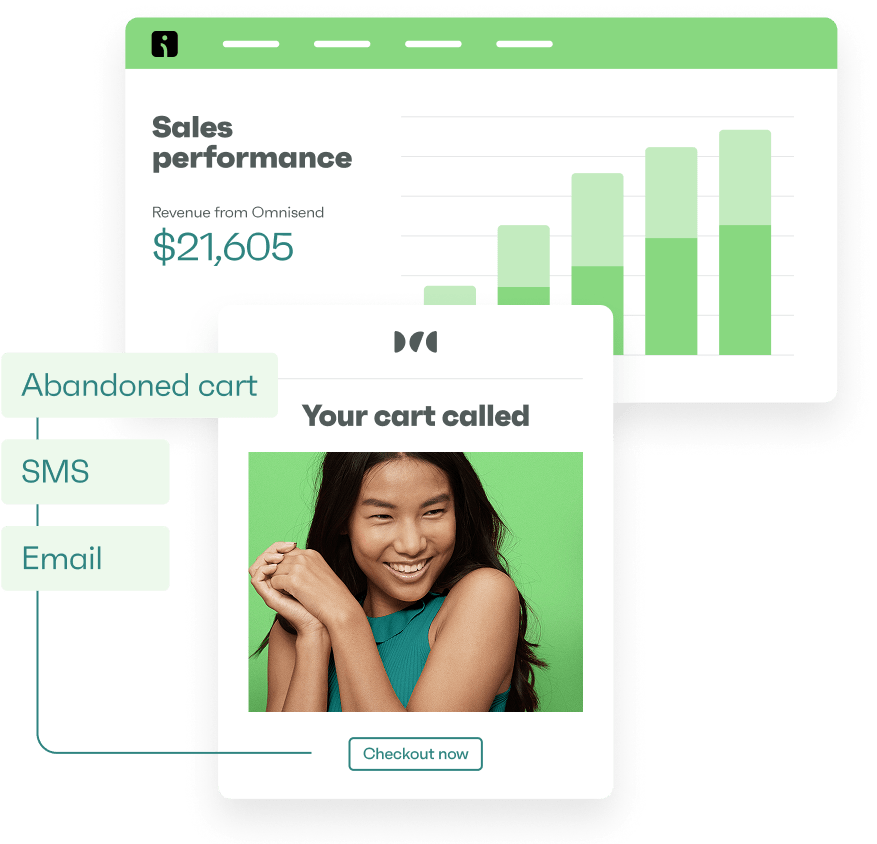
Drive sales on autopilot with ecommerce-focused features
See FeaturesSMS marketing pricing is one of the first things businesses look at when planning campaigns. But understanding the true costs goes beyond the per-message rate. For many, it’s also a deciding factor when choosing a platform.
Indeed, it isn’t always simple to figure out exactly “how much is SMS marketing?” Providers use different models, rates vary by region, and hidden fees can add up quickly.
In this guide, we break down everything you need to know about how much SMS marketing costs. We’ll explore the factors that affect your text message costs, how to calculate returns, and how to choose the right provider for your goals.
If you’ve ever wondered how much SMS marketing costs or why your last SMS blast cost spiked unexpectedly, you’re in the right place. Let’s demystify SMS marketing prices so you can budget and convert effectively.
Quick sign up | No credit card required
How much does SMS marketing cost?
SMS marketing pricing depends on where you send your messages and their length. Rates vary by country, and message length can multiply costs if you go past the character limits.
Here’s how it works:
- A standard GSM message segment (covers basic letters, numbers, and common punctuation) allows up to 160 characters
- A Unicode message segment (used for emojis, symbols, or non-Latin scripts) allows up to 70 characters
Messages that exceed these limits are split into multiple segments, with each segment billed separately. A 320-character message counts as two SMS, and a 161-character message? Also, two SMS.
So, just how much does text marketing cost? Here’s a quick look at SMS marketing rates by region:
| Region | Typical range (per SMS) |
|---|---|
| US | ~$0.015 to $0.03 |
| UK | ~$0.04 to $0.06 |
| EU | ~$0.05 to $0.07 |
| Australia and Canada | ~$0.03 to $0.05 |
| Other countries | Varies, up to $0.10+ |
Let’s break that down.
Say you send a 300-character Unicode message to 1,000 contacts. That’s five segments per message.
- In the US, at $0.015/segment, you’ll pay $0.075/recipient, amounting to $75
- In Germany, at $0.07/segment, you’ll pay $0.35/recipient, amounting to $350
Here’s how you can control the cost of SMS marketing:
- Cap frequency to avoid overspending
- Keep texts short to avoid extra, unnecessary segments
- Segment your audience to send fewer, more relevant messages
- Use tools like Omnisend’s SMS calculator to forecast campaign costs and ROI
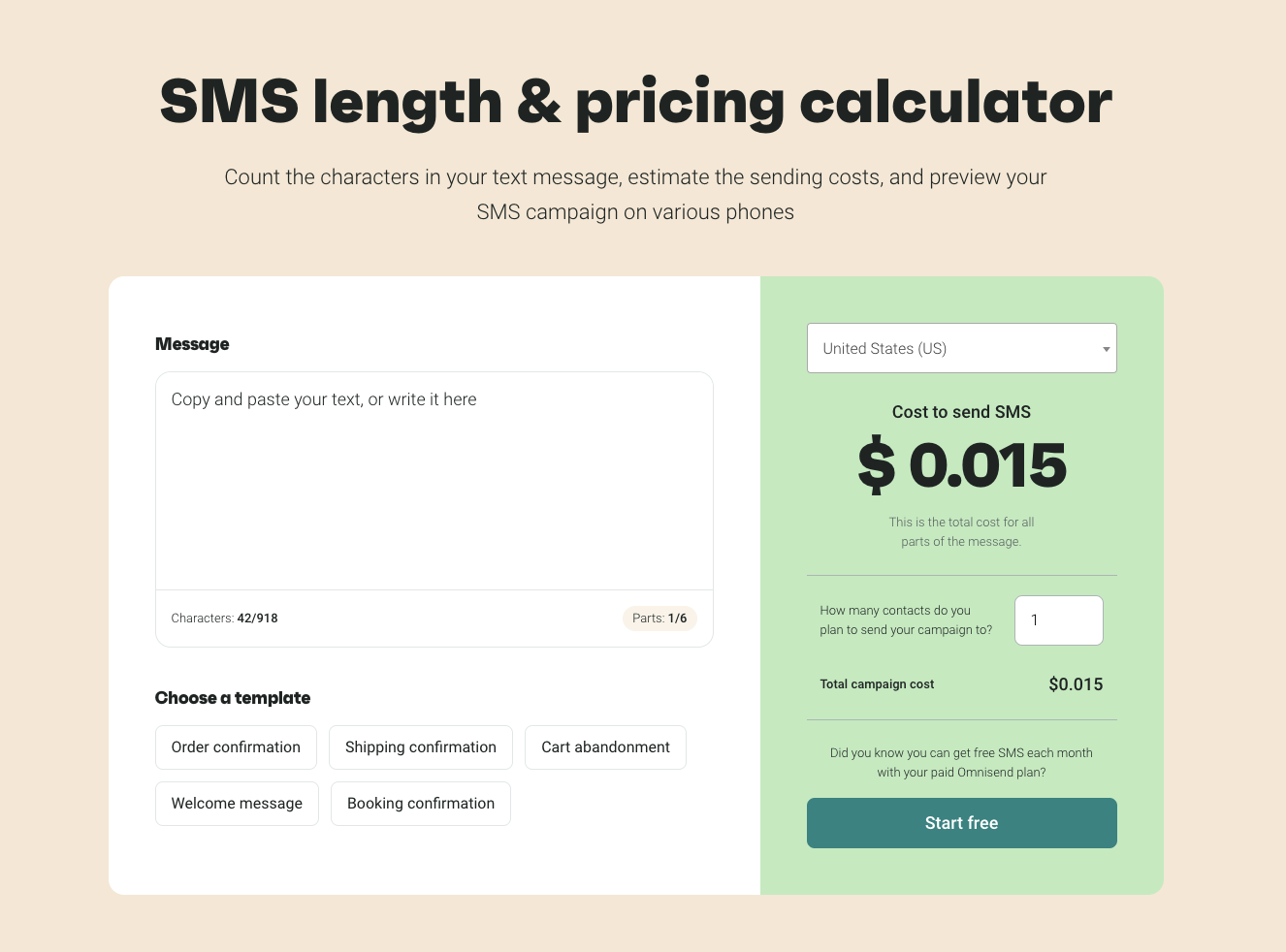
What factors affect SMS prices?
SMS marketing price varies by message length, number type, and destination. To understand how much does SMS cost, consider how these factors influence segment count, carrier fees, and platform billing. Watch out for:
- Volume and commitment > lower unit rates: Bulk sends or monthly credit plans often reveal tiered discounts, reducing your per-message cost
- Message length and encoding > segment-based charges: Longer texts are divided into multiple segments when sent. Unicode encoding shortens each segment’s limit, which increases the total number of sends
- Phone number type > setup and lease fees: 10DLC numbers require registration, toll-free numbers need verification, and short codes involve premium leasing
- Destination country > carrier pass-through fees: International sends may trigger higher network charges, especially in regions with elevated carrier costs
- MMS vs. SMS > media surcharges: Including images, GIFs, or video converts SMS messages to the pricier MMS, which increases your text message marketing cost
- Compliance and registration > added campaign fees: US carriers require 10DLC brand and campaign registration, plus adherence to compliance best practices
👉 Pro tip: Keep messages at 160 characters or less to avoid multi-segment charges and keep your SMS marketing costs predictable.
What SMS pricing models do providers use?
Pricing varies across different SMS platforms. To compare text message marketing pricing rates fairly, you’ll need to understand the main pricing models. Here’s a quick breakdown:
| Model | Best for | Watch out for |
|---|---|---|
| Pay-as-you-go Example: $0.03/SMS with no monthly commitment | Seasonal campaigns, small senders, and brands with unpredictable volume | Higher per-message rates, costs spiking during busy seasons |
| Credit bundles/tiers Example: Monthly SMS buckets with rollover or annual prepay options | Regular senders who want predictable costs and volume discounts | Unused credits that expire/don't roll over between billing cycles |
| Platform-included credits Example: SMS credits included in email + SMS platform plans | Businesses already using marketing platforms with built-in SMS allowances | Hidden costs (credits may only apply to SMS, not MMS or other channels) |
Each model has its tradeoffs. Bundles offer predictability, pay-as-you-go gives flexibility, and platform plans often include SMS credits, but only in higher tiers.
Omnisend uses a hybrid approach. The Free and Standard plans include $1 in bonus SMS credits (around 60 messages in the US). After that, you can add SMS credit subscriptions starting at $20/month.
Pro plan users get monthly SMS credits equal to their plan price. You can explore Omnisend’s pricing to see which tier fits your needs:
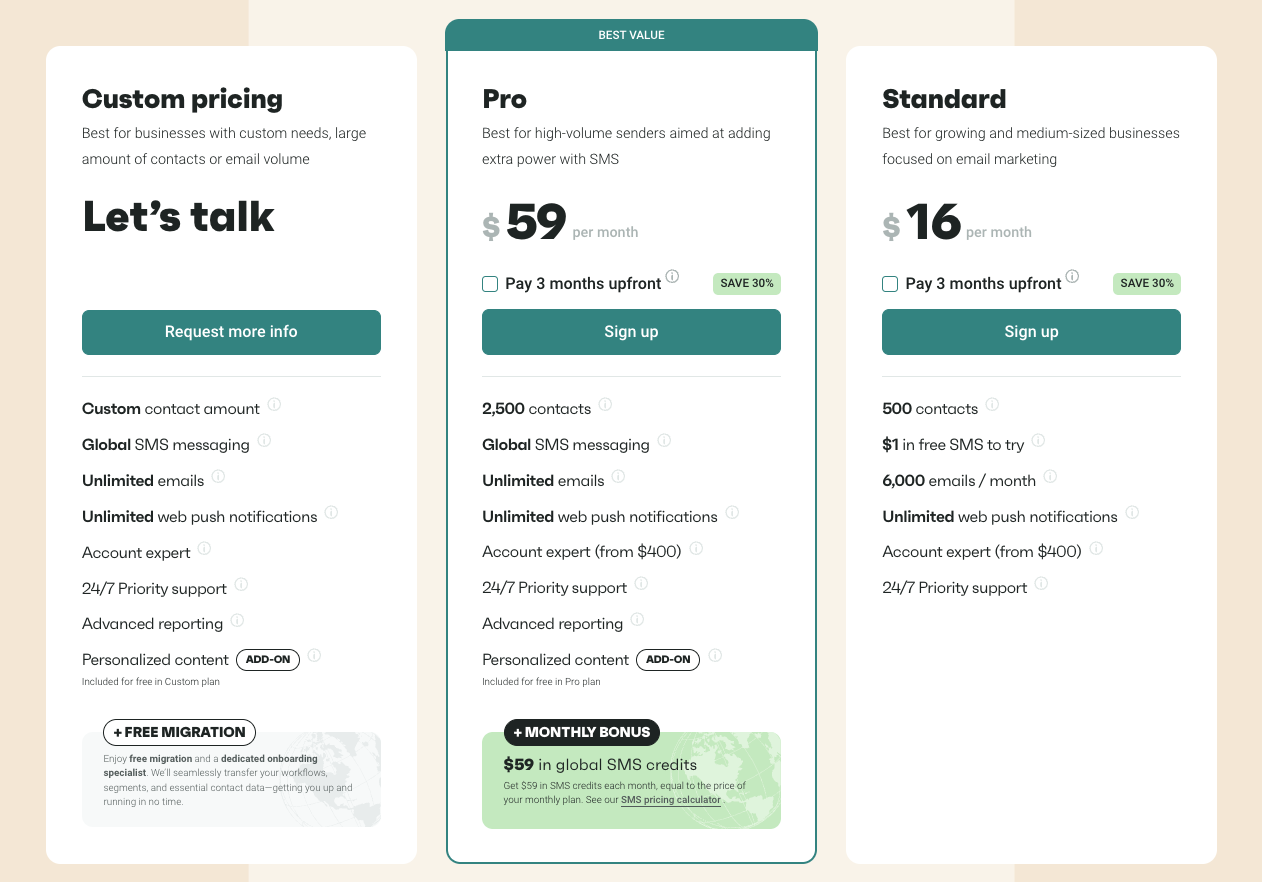
How to calculate SMS marketing ROI
Return on investment (ROI) is a key performance indicator (KPI) that measures the impact of SMS marketing. It shows how much revenue you generate compared to what you spend.
Here’s how to calculate your SMS marketing ROI:
ROI = (Revenue – Cost) ÷ Cost × 100
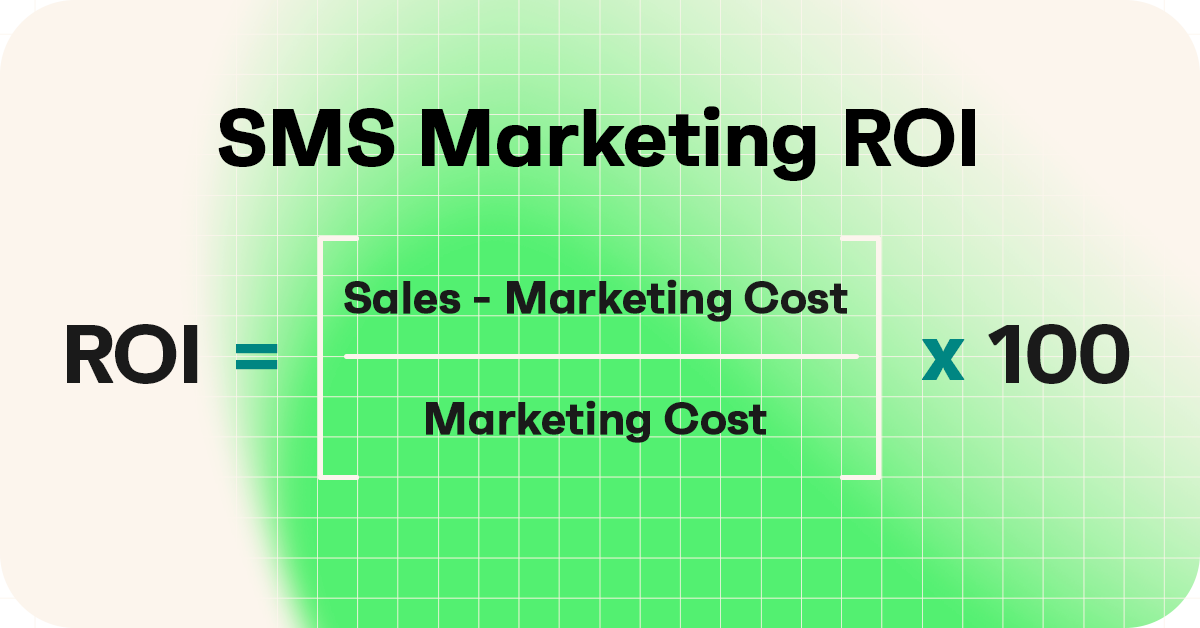
Let’s say your SMS campaign drives $500 in sales and costs $75 to send. ROI = ($500 – $75) ÷ $75 × 100 = 566%
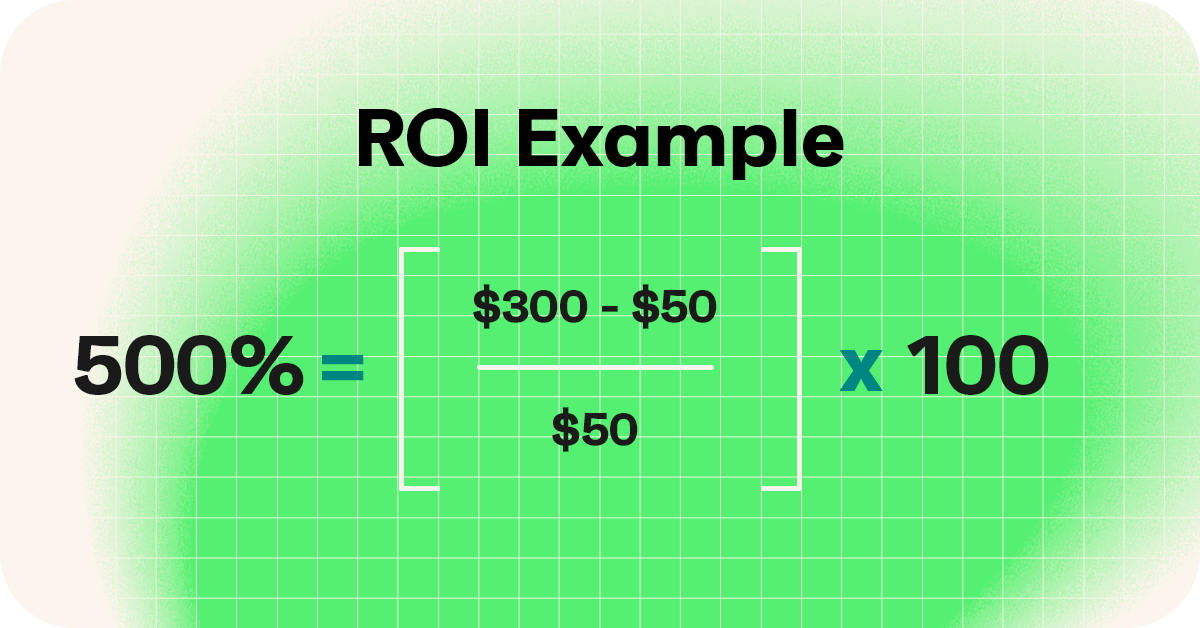
For every dollar spent, you earned $5.66 back. That’s a winning campaign.
It’s not just theory, either. In 2024, US brands generated over $25 million in SMS sales. Notably, automated messages drove 18% of orders, representing just nine percent of total sends.
The channel works, but only if you implement it properly and track returns. Just remember, results won’t always look the same.
For example, promotional blasts might deliver 300% ROI, while abandoned cart recovery could hit 800% or more. Order confirmations, on the other hand, generate loyalty but minimal direct revenue.
The key is to track ROI individually for each campaign type to understand where to invest and where to pull back. Test, measure, and optimize based on your specific audience and offers.
How to choose the right SMS platform
Not every SMS provider will fit your brand’s needs. Use this checklist to evaluate how much SMS marketing is really worth from each provider:
- Deliverability rates: Messages must actually reach subscribers’ phones across carriers and regions, not get filtered or blocked
- Automation capabilities: Pre-built workflows for abandoned carts, welcome series, and post-purchase follow-ups save time
- Analytics and reporting: Track opens, clicks, conversion rates, and ROI at the campaign level
- Customer support: Fast and reliable help when campaigns need troubleshooting or compliance questions arise
- Integration options: Seamless connections to your ecommerce platform, CRM, and other tools
- Transparent pricing: No hidden fees, clear per-message rates, and straightforward credit systems
For ecommerce brands, omnichannel support is a big plus. Platforms that combine email and SMS let you coordinate messaging across channels, so you can reach customers where they’re most responsive.
Omnisend checks these boxes. It offers high deliverability, no steep learning curve for building automations, two-way SMS messaging, and advanced reporting. Built-in ecommerce integrations connect to Shopify, WooCommerce, and BigCommerce in minutes.
Ecommerce brands can sync SMS with email and push notifications in one dashboard. Pro plans include monthly SMS credits equal to your plan cost, which helps simplify budgeting.
👉 Ready to see Omnisend in action? Sign up for the free plan and send your first SMS campaign today.
Quick sign up | No credit card required
FAQs
With Omnisend, SMS messages cost $0.015 per recipient in the US/Canada. At that price, a campaign to 2,000 customers costs $30. Most platforms also require monthly subscriptions.
Your costs vary by message length (160 characters for standard messages, 70 for Unicode), destination country, and volume. Going over character limits splits messages into multiple parts, with each charged separately.
While some platforms offer free trials or limited free credits, sustainable SMS marketing requires paid services. Many email marketing platforms, like Omnisend, include bonus SMS credits with paid plans.
Keep messages within character limits to avoid splitting costs. Target engaged audiences, use automation for better conversion rates, and choose platforms offering bundled SMS credits with their subscription plans.
While there’s no fixed number, you can start with two to four messages monthly, plus automated flows like cart recovery. Test frequency based on your campaign goals and audience tolerance.
Not sustainably. Some providers offer free credits or trials. However, ongoing text message marketing typically requires paid plans or credit bundles to scale effectively.
The most likely explanation is that your message exceeded 160 characters, included Unicode, or was sent to countries with higher carrier fees.
MMS messages support media like images or GIFs, but it costs more per send. SMS is text-only and more affordable for most marketing use cases.
TABLE OF CONTENTS
TABLE OF CONTENTS


No fluff, no spam, no corporate filler. Just a friendly letter, twice a month.

 OFFER
OFFER







